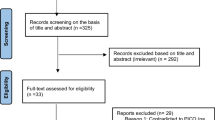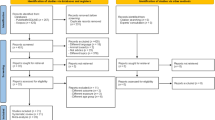Abstract
Objective
To develop a new model of vascular dementia for evaluating Chinese medicine prescriptions.
Methods
Eighty-eight male Wistar rats were randomly divided into 4 groups. At d00, d42, d70, d98 (ni=20, 20, 24, 24) during fatty-feeding, rats in each group were further divided into 10 or 12 subgroups (ni=2), respectively. Lacunar stroke were replicated with the injection of thrombi which coagulated artificially from itself blood. The median lethal doses (LD50) were regressed from accumulative mortality in each geometric thrombus doses (k=0.75, 0.5, 0.85, 0.85), respectively. The degree of vascular dementia was evaluated as exploratory, learning and memorizing abilities. The median effective dose of thrombus for replicating rat model was regressed from dementia scores which were derived from the abilities. The linear correlation was regressed between the values of LD50 or effective dose (ED50) and the durations (days) of hypercholesterolemia. This model of vascular dementia was pathologically confirmed as the neural injuries from lacunar stroke in rats.
Results
The hypercholesterolemia was indicated as elevated total cholesterol, triglyeerides low-density lipoprotein cholesterol, and decreased high-density lipoprotein cholesterol. The values of LD50 with its 95% confidence intervals (CI) were 1525.0 (1361.0–1709.0), 584.3 (490.1–696.6), 168.7 (163.7–173.8), or 62.4 (59.5–65.4) mg/mL, at d00, d42, d70, and d98, respectively. There is a linear regression between the values of LD50 and the durations of hypercholesterolemia (y=–15.33x+1390.0, r=0.963, P<0.05). The values of ED50 with its 95% CI were 528.8 (340.5–821.4), 217.0 (20.84–2259.0), 96.3 (23.4–402.6), or 47.0 (43.7–50.6) mg/mL from dementia score, at d00, d42, d70, and d98, respectively. There is a linear regression between the values of ED50 and the durations of hypercholesterolemia (y=–4.992x+484.2, r=0.965, P<0.05). The neural injuries were demonstrated as neural degeneration and necrosis.
Conclusions
For evaluating Chinese medicine, a model of vascular dementia in rats is set up with the lacunar stroke from self-thrombosis during hypercholesterolemia. This model from lacunar stroke is useful to investigate the pathogenesis and treatment of vascular dementia.
Similar content being viewed by others
References
Liu J, Wang LN, Tan JP. Dementia in China: Current status. Neurology 2013;81:1077–1078.
Sacco RL, Kasner SE, Broderick JP, Caplan LR, Connors JJ, Culebras A, et al. An updated definition of stroke for the 21st century: a statement for healthcare professionals from the American Heart Association/American Stroke Association. Stroke 2013;44:2064–2089.
Micheli S, Corea F. Lacunar versus non-lacunar syndromes. Front Neurol Neurosci 2012;30:94–98.
Lackland DT, Roccella EJ, Deutsch AF, Fornage M, George MG, Howard G, et al. Factors influencing the decline in stroke mortality: a statement from the American Heart Association/American Stroke Association. Stroke 2014;45:315–353.
van Dijk AC, Fonville S, Zadi T, van Hattem AM, Saiedie G, Koudstaal PJ, et al. Association between arterial calcifications and nonlacunar and lacunar ischemic strokes. Stroke 2014;45:728–733.
Ren M, Lin ZJ, Qian H, Choudhury GR, Liu R, Liu H, et al. Embolic middle cerebral artery occlusion model using thrombin and fibrinogen composed clots in rat. J Neurosci Methods 2012;211:296–304.
Kindell J, Sage K, Wilkinson R, Keady J. Living with semantic dementia: a case study of one family's experience. Qual Health Res 2014;24:401–411
Connolly S, Gillespie P, O'Shea E, Cahill S, Pierce M. Estimating the economic and social costs of dementia in Ireland. Dementia (London) 2014;13:5–22.
Wang JH. Initiating Hehe medical system of traditional Chinese medicine and biomedicine to realize health cycle of human beings. Chin J Integr Med 2011;17:945–949.
Gu P, Chen H. Modern bioinformatics meets traditional Chinese medicine. Brief Bioinf 2014;15:984–1003.
Xue R, Fang Z, Zhang M, Yi Z, Wen C, Shi T. TCMID: Traditional Chinese medicine integrative database for herb molecular mechanism analysis. Nucleic Acids Res 2013;41:D1089–D1095.
Wei MQ, Tian JZ, Shi J, Ma FY, Miao YC, Wang YY. Effects of Chinese medicine for promoting blood circulation and removing blood stasis in treating patients with mild to moderate vascular dementia: a randomized, doubleblind and parallel-controlled trial. J Chin Integr Med (Chin) 2012;10:1240–1246.
Kung FC, Ishii R, Liu HC, Takeda M. New possibility of traditional Chinese and Japanese medicine as treatment for behavioral and psychiatric symptoms in dementia. Clin Interv Aging 2012;7:393–396.
Guo MD, Zhou WQ, Wei Y. Clinical curative effect of Shenxiong Bushen Capsule and its effect on the quality of life of patients with vascular dementia. Chin J Integr Tradit West Med (Chin) 2010;30:593–7.
Willie CK, Tzeng YC, Fisher JA, Ainslie PN. Integrative regulation of human brain blood flow. J Physiol 2014;592:841–859.
Sachdev PS, Lipnicki DM, Crawford JD, Wen W, Brodaty H. Progression of cognitive impairment in stroke/TIA patients over 3 years. J Neurol Neurosurg Psych 2014;85:1324–1330.
Bailey EL, McCulloch J, Sudlow C, Wardlaw JM. Potential animal models of lacunar stroke: a systematic review. Stroke 2009;40:e451–e458.
Xu T, Peng Jb, Zhang WT, Zhao X, Zhang TT, Yang SJ, et al. Antiatherogenic and anti-ischemic properties of traditional Chinese medicine Xinkeshu via endothelial protecting function. Evid Based Complement Alternat Med 2012;2012:302137.
Weerts A, Pattyn N, van de Heyning P, Wuyts F. Evaluation of the effects of anti-motion sickness drugs on subjective sleepiness and cognitive performance of healthy males. J Psychopharmacol 2013;28:655–664
Wang W, Liao QP, Quan LH, Liu CY, Chang Q, Liu XM, et al. The effect of Acorus gramineus on the bioavailabilities and brain concentrations of ginsenosides Rg1, Re and Rb1 after oral administration of Kai-Xin-San preparations in rats. J Ethnopharmacol 2010;131:313–320.
Reed Lj, Muench H. A simple method for estimating fifty percent endpoints. Am J Epidemiol 1938;27:493–497.
Thong JY, Hilal S, Wang Y, Soon HW, Dong Y, Collinson SL, et al. Association of silent lacunar infarct with brain atrophy and cognitive impairment. J Neurol Neurosurg Psychiatry 2013;84:1219–1225.
Strickland DK, Au DT, Cunfer P, Muratoglu SC. Lowdensity lipoprotein receptor-related protein-1: role in the regulation of vascular integrity. Arterioscler Thromb Vasc Biol 2014;34:487–498.
Benarroch EE. Nitric oxide: a pleiotropic signal in the nervous system. Neurology 2011;77:1568–1576.
Golub AS, Song BK, Pittman RN. Muscle contraction increases interstitial nitric oxide as predicted by a new model of local blood flow regulation. J Physiol 2014;592:1225–1235.
Lin N, Li M, Friedlander RM. Embolus extravasation: a new mechanism for microvascular recanalization? Neurosurgery 2010;67:N22–N23.
Author information
Authors and Affiliations
Corresponding author
Electronic supplementary material
Rights and permissions
About this article
Cite this article
Yang, Sj., Chen, C., Zu, Cz. et al. A rat model of vascular dementia for evaluating Chinese medicine prescriptions. Chin. J. Integr. Med. (2016). https://doi.org/10.1007/s11655-015-2435-4
Received:
Published:
DOI: https://doi.org/10.1007/s11655-015-2435-4




